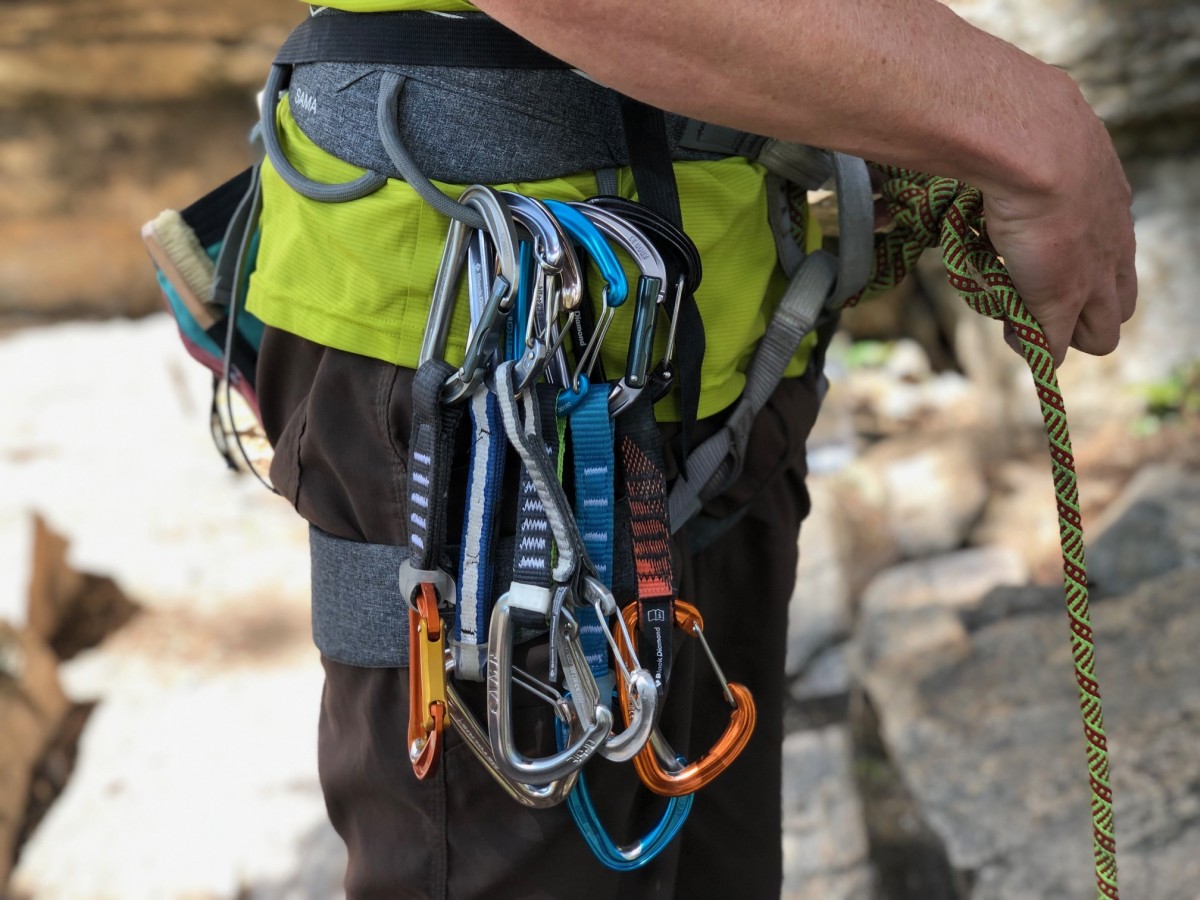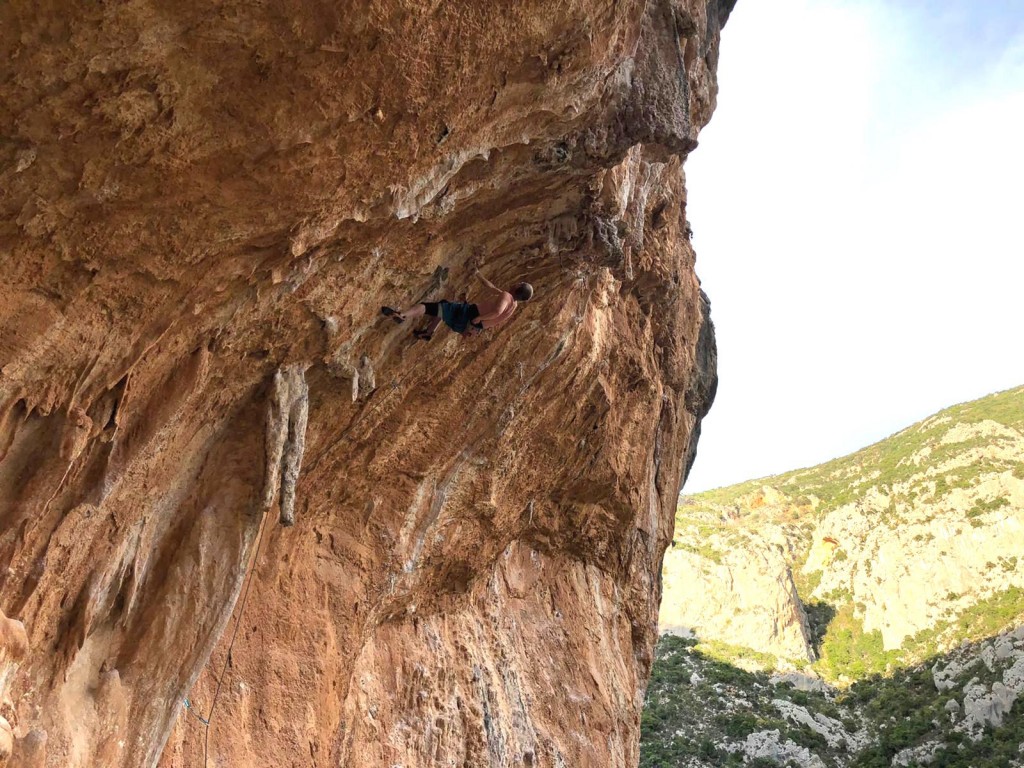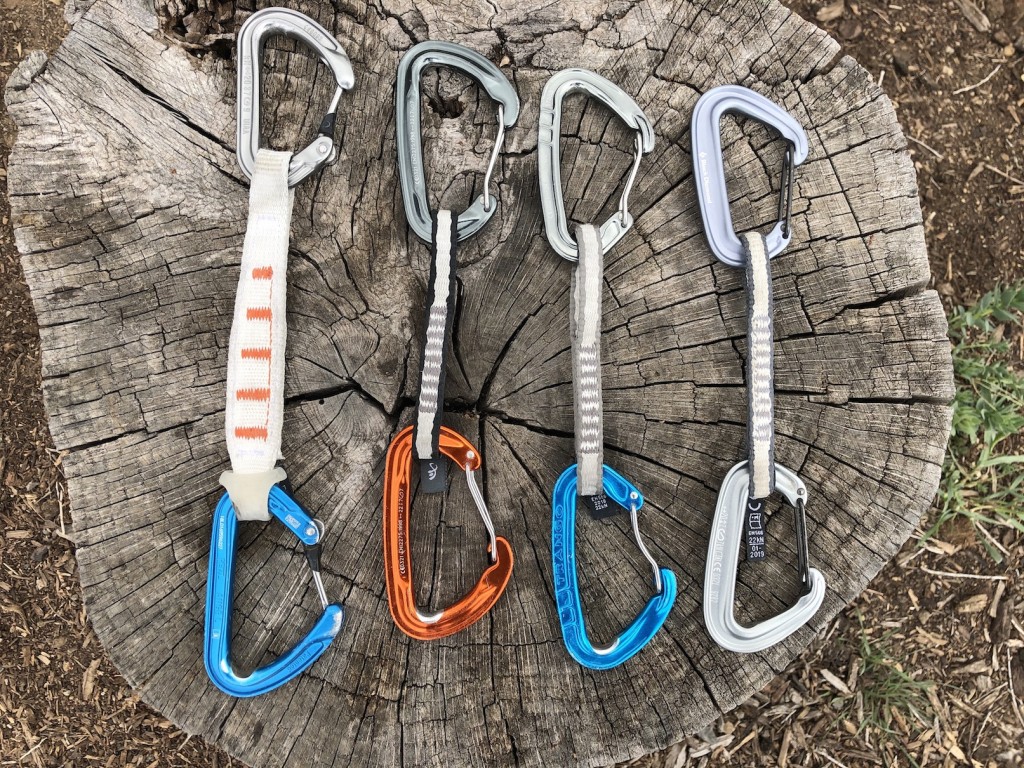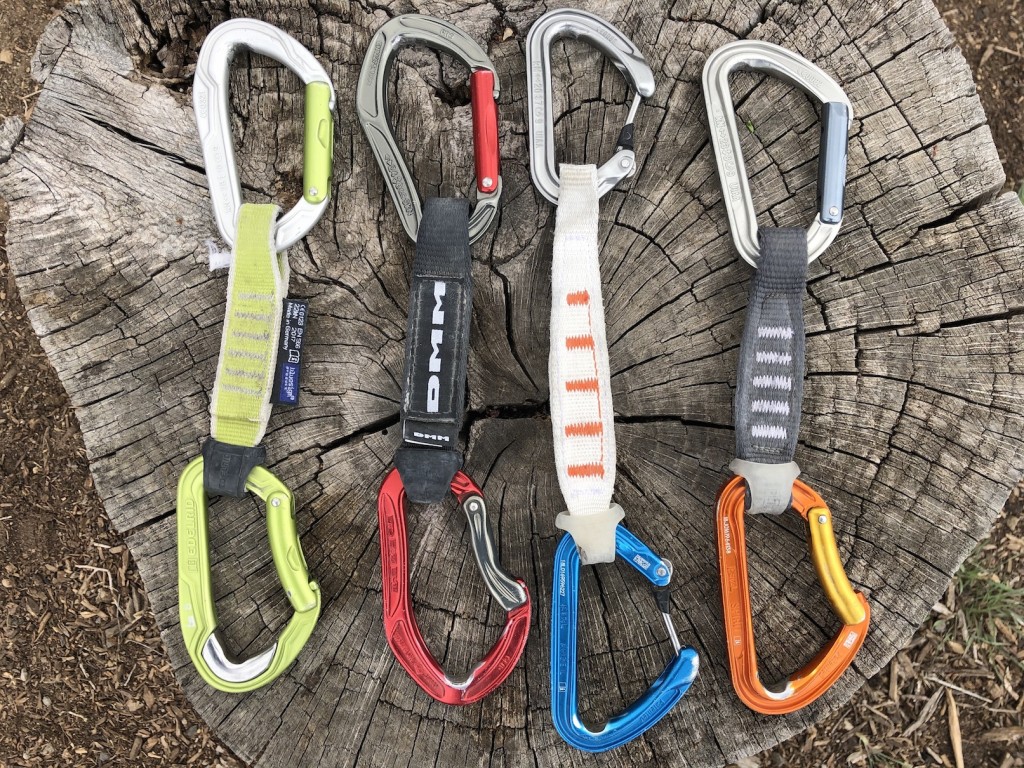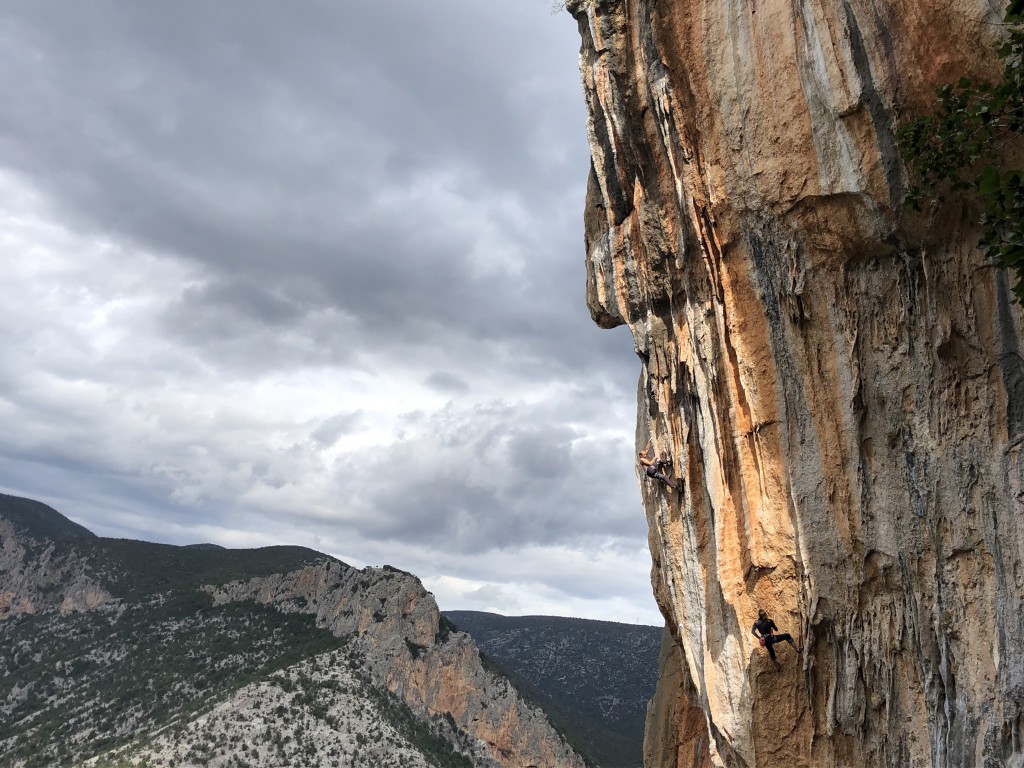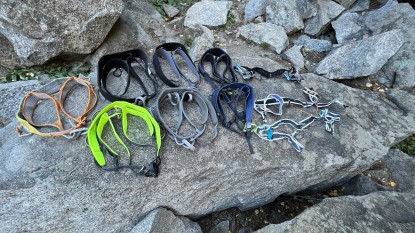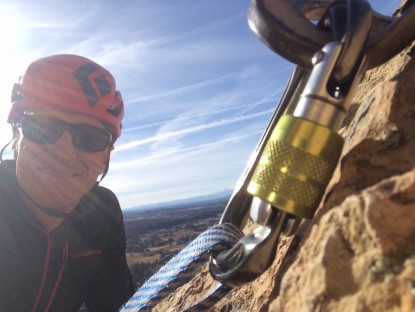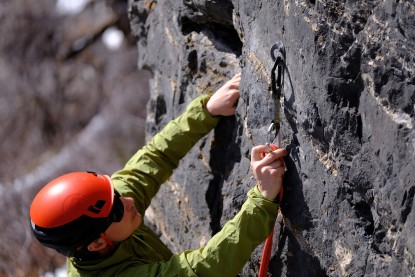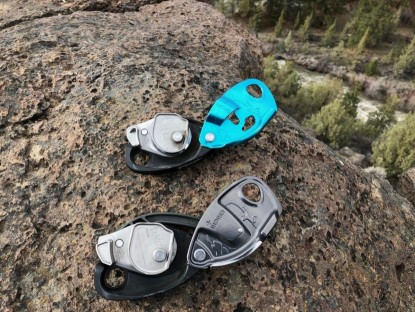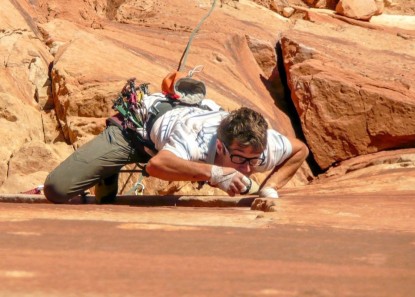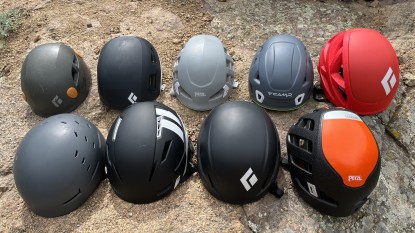Climbing Quickdraws are one of the most common pieces of equipment, and are especially necessary for sport climbing. After purchasing a harness, chalk bag, shoes, helmet, belay device, and a rope, quickdraws are the next in line for the aspiring lead climber. This article aims to further educate a beginner climber by helping them understand what quickdraws are used for, whether or not they need to purchase any, and furthermore, which type is the most appropriate for them to purchase. For information and our recommendations on the best quickdraws, check out our Best Quickdraws for Climbing Review.
What is a Quickdraw?
Climbing quickdraws are pieces of gear that serve to attach the climbing rope (and the climber tied into that rope) to the wall. They are comprised of two carabiners attached by a length of semi-rigid sewn webbing, referred to as a "dogbone." One carabiner is for attaching to the protection on the wall, most often a bolt, but can also be used to clip into stoppers, cams, pitons, or other forms of traditional protection. This carabiner is loosely attached to the sewn dogbone, so that it can move freely. The other carabiner is held securely in place to the dogbone in a fixed position by a rubberized keeper. This carabiner is for clipping the climber's rope through while leading, and needs to stay firmly in position so that clipping is easier, and to guarantee that the carabiner is loaded in the optimal direction in case of a fall.
While this article aims to provide useful information for a beginner climber looking to purchase quickdraws, please don't confuse it for actual instruction. Climbing is a dangerous game, and one mistake can kill you or a friend! We repeat: Don't use this article as instruction! Instead, hire a guide to teach you how to climb properly and safely.
An important distinction is that quickdraws have slings (dogbones) of a fixed length, and are most often used for sport climbing. This differs from climbing slings, which are much longer, and are often tripled up to form "alpine quickdraws," which can easily be extended. These types of slings are more commonly used when traditional or alpine climbing.
Do I Need to Buy Quickdraws?
If you aspire to lead climb outdoors, then you will need to buy some quickdraws. In climbing gyms, which are an excellent place to learn how to lead climb (with proper instruction), the draws on lead walls will already be in place, so there is no need to buy any for gym climbing. Outside, it is most common that there will be no fixed draws, and you will need your own selection to clip to the bolts to protect you as you ascend.
A common rack of quickdraws is made up of roughly 12, and this is a good number to start with if you are a beginner. Be sure to read the guidebook, or to visually count the bolts you can see from the ground, to be sure you take enough. Most dedicated sport climbers have a rack of 18 or so, which will easily get you up 99% of sport climbs. Alternatively, you and your climbing partner could each have less than 12, and combine racks for a day of climbing.
Quickdraw Features
Quickdraws are really a fairly simple piece of equipment, and so there are few defining features that have a noticeable impact on use and performance.
GatesThe carabiners on a quickdraw will have one of two types of gates: Solid, or Wire. Solid gates look how they sound, they have a solid piece of aluminum to serve as the gate, whereas wire gates have a looped piece of wire. The main reason that this matters is the way they join to the nose of the carabiner. Solid gates these days join using a keylock design, which means that the nose of the carabiner slots into a hole in the gate. The nose is therefore smooth, which minimizes the chances of it getting hung up on something, like the bolt hanger as you are trying to unclip. Wire gates, on the other hand, attach to the nose of the carabiner with a hook and notch, found on the nose itself. This hook and notch can hang up more easily when trying to unclip bolts, especially on steep terrain. There are other advantages and disadvantages to the two main types of carabiner gates, which has been expanded upon greatly in our How to Choose the Right Climbing Carabiner article. On quickdraws, any combination of solid and wire gate carabiners can be found: both wire, both solids, or a hybrid with solid on the top and wire on the bottom.
Hot Forged vs. Cold Forged
Hot forged vs. cold forged are the two different ways that aluminum carabiners can be made. Hot forged carabiners are becoming far more popular, mostly because this system allows for easier variability of design. Rather than using standard round metal stock, hot forging can allow designers to create I-beam shapes, which essentially allow the same amount of strength, with less material. These carabiners are therefore lighter at the same strength, and can also be made with extra ridges for easier gripping, and usually look cooler as well. Whether the carabiners on the quickdraws you are interested in are hot forged or cold forged does not really matter, and should not be a worthwhile consideration in your selection. We only mention it here because it is a very common piece of marketing and design jargon one will encounter, so realize you may wonder about the differences.
Slings
Quickdraws have a fixed length sling, but most come in either 12cm or 18cm lengths, which you get to choose. While the shorter length is perhaps more common, the longer length is certainly more versatile. Longer slings can be clipped from lower (provided the draws are already hanging), a great advantage depending on the route. That said, longer slings generally cost a little bit more, and hang lower off your harness.
The width of the sling or dogbone is also significant. Thinner slings obviously weigh less and are less bulky in the pack and on the harness, making them the optimal choice for alpine climbing or big days. On the other hand, the wider a sling is, the easier it is to grab and hold onto while you make a clip. For most sport climbing, this is a very important consideration, and super thin slings can be nearly impossible to grab and hold while you clip. If you are buying sport draws, a wider sling is better.
Types of Quickdraws
Quickdraws fit into three loose categories, which are not an industry standard definition, but are simply our effort to help you notice the different types that may be most applicable to you. The main differences between the three types are price and weight. As weight goes down, so does price, and as weight goes up, so does price (in general).
Lightweight
These draws are the lightest weight because they feature the smallest carabiners and the thinnest slings, usually around 10mm. Ironically, they are also usually the most affordable, but we caution new climbers against purchasing these simply because of their price. They are optimal for alpine and traditional climbing, but perform the lowest for regular sport climbing.
Best Uses: Alpine Climbing, Long Trad Routes, Onsighting Mega 40+ meter pitches
Examples: Cypher Firefly II; Mad Rock UltraLight Quickdraw; Mad Rock Concorde; Trango Phase; Black Diamond MiniWire; Petzl Ange Finesse
Affordable Sport Draws
This category encompasses the middle ground between the super-light draws and the high end, sport-specific draws. These are generally heavier than the lightweight options, but also far more usable for sport climbing, which is their intended purpose. They also tend to cost more than the most affordable options but are nowhere near as expensive as high-end sport draws. This is the sweet spot for the majority of new climbers looking for solid value. They can have any combination of carabiners, from double solid gates, to double wire gates, to a hybrid of solid on top and wire on the bottom.
Best Uses: Sport Climbing
Examples: Petzl Djinn Axess; Black Diamond HotForge Hybrid; Black Diamond HotForge; CAMP USA Orbit Wire Express KS; Metolius Inferno II Quickdraw
High End Sport Draws
The other end of the spectrum is the high-end sport climbing draws. There is no doubt that these are the best performers and the ones that most elite sport climbers will eventually end up owning. They cost the most by a good margin but are worth it in the end. They are also the heaviest, so you don't want to lug a rack of them too far from the car. They are usually made with double solid gate carabiners. There is no reason for beginner climbers not to buy these if they have the budget to do so.
Best Uses: Sport Climbing, Steep Sport Climbing
Examples: Petzl Spirit Express; DMM Alpha Sport; Edelrid Bulletproof
How Often Should I Replace Quickdraws?
Like all climbing equipment, you should carefully inspect quickdraws each time you head out before putting them into use. Quickdraws need to be replaced if the carabiners become too worn, or if the slings become frayed or color bleached. How long this takes depends on the wear that you put on the gear, and will vary from person to person, and from one piece of gear to another. Even if it has not worn out, most climbing gear manufacturers recommend you retire your gear after 10 years of use.
It is common for the lower carabiner to become worn into a groove by the action of the rope running through it, and this groove can eventually become sharp, presenting an obvious hazard to your rope and safety. This happens quicker in sandstone climbing areas like the Red River Gorge, or if you use an especially dirty rope. It is most common on the first draws on a climb, due to the angle the rope runs through these draws, so be sure to inspect those first draws, especially if they are fixed.
Slings and dogbones can become frayed with hard use, or bleached and crusty due to sunlight and UV exposure. If either happens, retire your draws! Bleached and stiff nylon dogbones are especially weak, sometimes retaining only 10% of their strength.
Choosing the Best Quickdraw For You
Asking yourself a few key questions can quickly narrow down the selection of quickdraws to a manageable few for more in depth consideration.
Does Weight Matter?
If weight is a critical aspect for you, then you can easily eliminate much of the field. Those who want the very lightest quickdraws should only consider those in the lightweight category listed above. However, keep in mind that most of these are only solid choices for alpine or traditional climbing, and make for very poor sport climbing draws. If you are not worried about having the lightest draws on the planet because you are not going to be carrying this rack to the top of large walls or huge mountains, then we recommend crossing off the super lightweight draws, and focusing instead on the affordable and high end sport draws.
Am I On A Budget?
If you are on a budget, then there are lots of excellent draws to choose from that still offer great performance while sport climbing. These are listed in the "Affordable Sport Draws" list above. Don't be ashamed by rocking these draws at the crag, as nobody will care that you don't have the most expensive quickdraws that money can buy, and the performance drop-off by choosing these over the high end draws is very small, and certainly won't affect whether you are capable of sending or not.
Experience Level
Honestly, experience level doesn't really matter when it comes to selecting the right quickdraws. While most highly experienced climbers will be able to appreciate the buttery smooth clipping action that comes with higher end draws, don't for a second fool yourself (no matter how experienced or not you are) into thinking that having more expensive quickdraws is going to make you a better climber. It really is simply a matter of personal preference. Some people want the best just because, and have the money to buy them. Others like to save some money, knowing that quickdraws will quickly wear out anyway, and that they can send clipping anything. Your call!
Conclusion
Quickdraws are an essential piece of lead climbing equipment for tackling the coolest cliffs in the great outdoors, but which ones you choose to buy is not a life and death decision. While spending more money might net you a slightly enhanced experience, the reality is every choice will get the job done, and none of them will make you any stronger or more skilled at ascending rocks. Remember to be safe, get proper instruction, always double-check, and happy climbing!

